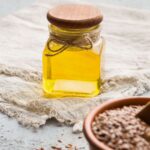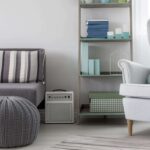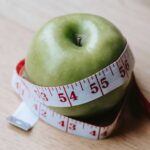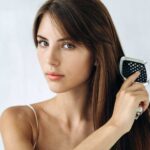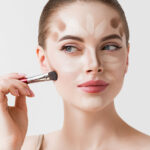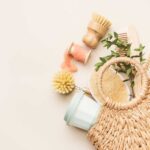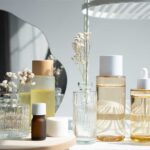Living with rosacea isn’t easy. It can damage your confidence on a daily basis, and cause a lot of physical discomfort, irritation and pain. Thankfully, we are learning more and more about this condition over time. As a result, there are ways to manage rosacea and minimise its impact on your skin. Granted, it can be a lengthy process to figure out your exact triggers, symptoms and solutions. But with research to guide you, you can find a way to make rosacea much more manageable.
What Is Rosacea?
Rosacea is a chronic condition that affects your skin, particularly around the cheeks, nose, chin and forehead. People with rosacea on their face are prone to blushing, flushing and redness that looks similar to a sunburn. They also tend to develop bumps or pimples along their skin that can burn or sting.
Rosacea can also cause the eyes to become red, irritated and/or swollen, while the skin in general will be extra sensitive to common skin care ingredients.
Rosacea additionally causes textural changes, skin thickening and the development of small visible blood vessels.
If you have this condition, you might notice the skin around your nose getting thicker, the redness on your cheeks deepening over time or the development of conjunctivitis around your eyes. Depending on the person, there are many ways in which rosacea can affect your skin.
What Causes Rosacea?
There is no known cause of rosacea, and it isn’t contagious, but there is some evidence to suggest that it’s hereditary. Generally speaking, there isn’t anything you can do to avoid developing this condition. However, there are certain things that are known to trigger flare ups. These vary greatly from person to person, but some common ones include sun exposure, warm weather, hot baths and exercise. On the other end of the spectrum, some people find that very cold conditions can trigger their symptoms. Spicy foods and alcohol are also popular triggers, as well as stress and certain medicines. Even ingredients in skin care products such as cleansers, moisturisers and makeup are common culprits, which makes it difficult to know how to treat your skin.
To figure out your exact triggers, it can be helpful to keep a diary and record exactly what you do before experiencing a flare up.
Is Rosacea Common?
It is estimated that around 415 million people worldwide have rosacea. In Australia, there are more than 500,000 cases diagnosed each year. This means that, despite it being a condition that is rarely talked about, rosacea is relatively common. It’s tricky to know exactly how common it is because many people with rosacea don’t realise they have it. Cases vary dramatically from mild to severe, so some people are able to deal with the symptoms quite easily with over-the-counter skincare products and makeup. Others will require more serious treatment.
How to Treat Rosacea
When people are diagnosed with this condition, one of the first things they are likely to ask is, “can rosacea be cured?” Unfortunately, the short answer to this question is no. There is currently no known way to get rid of this condition entirely. However, there are ways to treat rosacea. This might mean preventing flare ups, or soothing the skin when it’s in the midst of a flare up. If you’ve explored the subject online, you might have heard a lot of ideas, opinions and ‘rules’ around treating rosacea already. The truth is, treating this condition effectively will involve figuring out what works for your particular skin type. This might take some trial-and-error, but practising the following tips is a good place to start.
1. Wear Sunscreen
Since sun exposure is such a common trigger for people with rosacea, wearing sunscreen is very important. Sunscreen should be worn everyday when you go outdoors, even if it appears cloudy. The only issue with this solution is that many people with rosacea will be sensitive to the ingredients found in sunscreen. It is recommended that you use an SPF 30 or higher sunscreen that offers broad-spectrum protection. Look for a sunscreen with zinc oxide, titanium dioxide, silicone and no fragrance. Also, it never hurts to use other forms of sun protection too, such as sunnies and a hat.
2. Minimise Your Skincare Routine
Skin experts advise that you keep your skincare routine fairly simple. Cut out any skincare products that contain alcohol, fragrances, and exfoliating or cosmeceutical ingredients such as retinol or vitamin C. These kinds of products often trigger rosacea. Instead, try a skincare routine that includes just a cleanser, daily SPF and a moisturiser. You should also try to be gentle with your skin, applying products softly rather than rubbing, scrubbing and exfoliating.
3. Repair Your Skin Barrier
When you have rosacea, your skin barrier is often weakened or compromised. This will make it more sensitive to irritants and bacteria. To help your skin, you need to find ways to calm it while strengthening the skin barrier. The best way to do this is by using products that are full of moisture-boosting ingredients such as ceramides, niacinamide, panthenol and free fatty acids. This moisturiser should be applied to your face every day to soothe dryness and restore hydration. However, you should keep in mind that using the wrong moisturiser can cause further issues for your skin. Choose one that is oil-free, fragrance-free, and hypoallergenic.
4. See a Professional for Medication
If your symptoms are particularly difficult to deal with or persist even after trying treatments, you should seek help from a professional. They can advise you on the correct medications to take as part of your treatment.
Don’t Give Up!
Figuring out your skin can take a lot of time and energy. It might be tempting to simply cover your face in heavy makeup or minimise social outings while you’re having a flare-up. These solutions could make you feel better in the moment, but they will not be helpful long-term. Instead, we encourage you to really pay attention to your skin and stay consistent with your new routine. It will all be worth it in the end!

